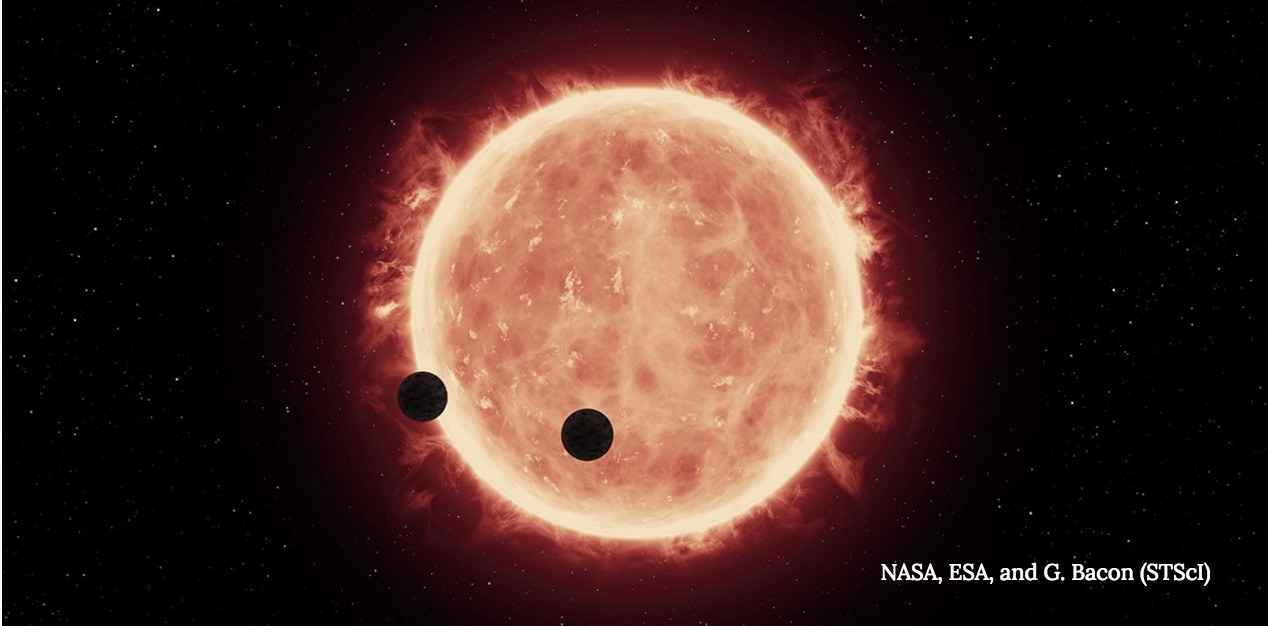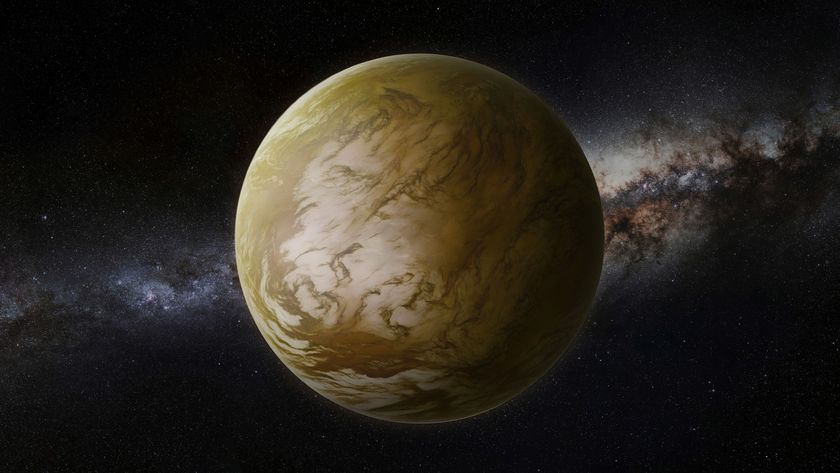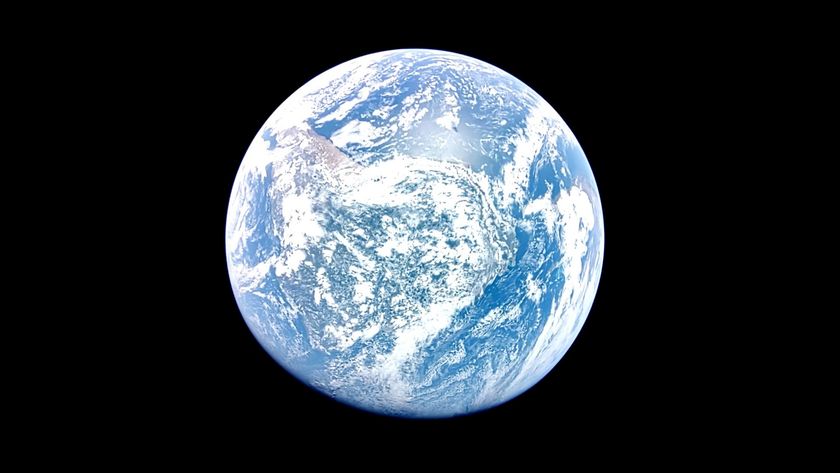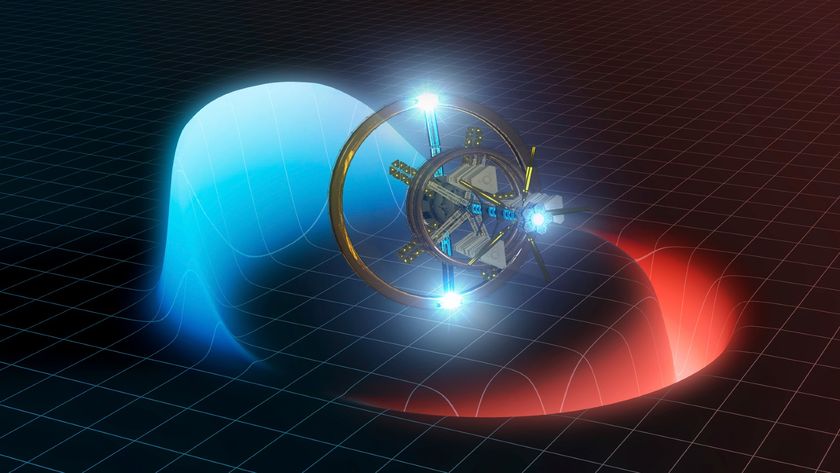Some Alien Worlds Could Have 'Too Much' Water for Life

As with everything in life, too much of a good thing can be bad — and that logic now seems to apply to alien life, too.
Since Proxima Centauri b (or just Proxima b) was discovered in August, countless imaginings as to what the small, Earth-sized planet would look like up-close have captivated the media. Is the planet truly Earth-like with mountains, oceans, lush green continents and an atmosphere in just the right proportions to support extraterrestrial life? Or is it actually a dry, barren hellhole being constantly irradiated by its star? It could go either way.
As Proxima b was only detected by its gravitational influence on Proxima Centauri — the small exoplanet's orbit causes the tiny star to wobble — we only know its mass and orbital period. But these two characteristics are exciting. Not only is Proxima b of approximate Earth-mass, it also orbits within the star's habitable zone, the region surrounding a star that is neither too hot or too cold for liquid water to exist on the surface.
On Earth, where there's liquid water, there's life. So if Proxima b has water on its surface, it might also be in a liquid state, so there's certainly some excitement surrounding the possibility that the world may also play host to life. But so far, we have absolutely zero evidence that water is even there, so its life-giving potential is purely speculative.
RELATED: Eyeballing Proxima b: Probably Not a Second Earth
Now, in new research by astrophysicists at the University of Bern, they've tackled this problem with planetary evolution models and found that red dwarf stars may preferentially host small, rocky worlds. Not only that, these worlds would likely contain large quantities of water.
"Our models succeed in reproducing planets that are similar in terms of mass and period to the ones observed recently," said Yann Alibert, of the Center of Space and Habitability (CSH) at the University of Bern, in a statement. "Interestingly, we find that planets in close-in orbits around these type of stars are of small sizes. Typically, they range between 0.5 and 1.5 Earth radii with a peak at about 1.0 Earth radius. Future discoveries will tell if we are correct!"
Get the Space.com Newsletter
Breaking space news, the latest updates on rocket launches, skywatching events and more!
From this study, which has been accepted for publication in the journal Astronomy & Astrophysics, these small alien worlds also evolved with huge quantities of water. For 90 percent of the exoplanets simulated, their total mass consisted of over 10 percent water. Considering Earth is only 0.02 percent water, the simulated red dwarf exoplanets are veritable ocean planets!
At first glance, this might seem like an incredible opportunity for advanced life forms to evolve on planets in red dwarf systems. After all, red dwarfs are among the most ancient of stars in our galaxy and have a predicted lifespan of longer than the age of the universe (14 billion years). Life on Earth only sprung into being 3 billion years ago when our sun was young; life on red dwarf worlds could evolve over epic timescales by comparison.
And now it seems that, according to established planetary formation theories, these ancient worlds could have a plentiful supply of water? Well, the mind boggles.
But a huge supply of water on small exoplanets orbiting red dwarfs may not necessarily be a good thing. "While liquid water is generally thought to be an essential ingredient, too much of a good thing may be bad," said study co-author Willy Benz.
RELATED: Welcome to Proxima b, Our Nearest 'Earth-like' Neighbor
In previous studies, water-dominated worlds were found to have unstable climates that may work against the evolution of life, perhaps stymieing these planets' potential for producing complex life forms. If this is the case, super-advanced alien civilizations stand little chance of becoming a reality. Add this to the fact that any habitable zone exoplanets around red dwarfs will be so close to their stars that they are constantly bathed in huge doses of radiation. Perhaps the only possible life on these worlds will be basic aquatic life and have to exist deep under protective layers of icy crust.
"Habitable or not, the study of planets orbiting very low mass stars will likely bring exciting new results, improving our knowledge of planet formation, evolution, and potential habitability," said Benz.
The upshot is that although we have plenty of ideas as to what form Proxima b will take, red dwarfs are the most common type of star in our galaxy. And if they have a preference for forming small, rocky worlds of a similar mass as Earth, statistically-speaking, there should be millions of "Earth 2.0"s out there in our galaxy with just the right quantities of water.
But do any of these worlds host life? For now, we can only speculate.
Source: University of Bern
Originally published on Discovery News.
Join our Space Forums to keep talking space on the latest missions, night sky and more! And if you have a news tip, correction or comment, let us know at: community@space.com.
Ian O'Neill is a media relations specialist at NASA's Jet Propulsion Laboratory (JPL) in Southern California. Prior to joining JPL, he served as editor for the Astronomical Society of the Pacific‘s Mercury magazine and Mercury Online and contributed articles to a number of other publications, including Space.com, Space.com, Live Science, HISTORY.com, Scientific American. Ian holds a Ph.D in solar physics and a master's degree in planetary and space physics.



